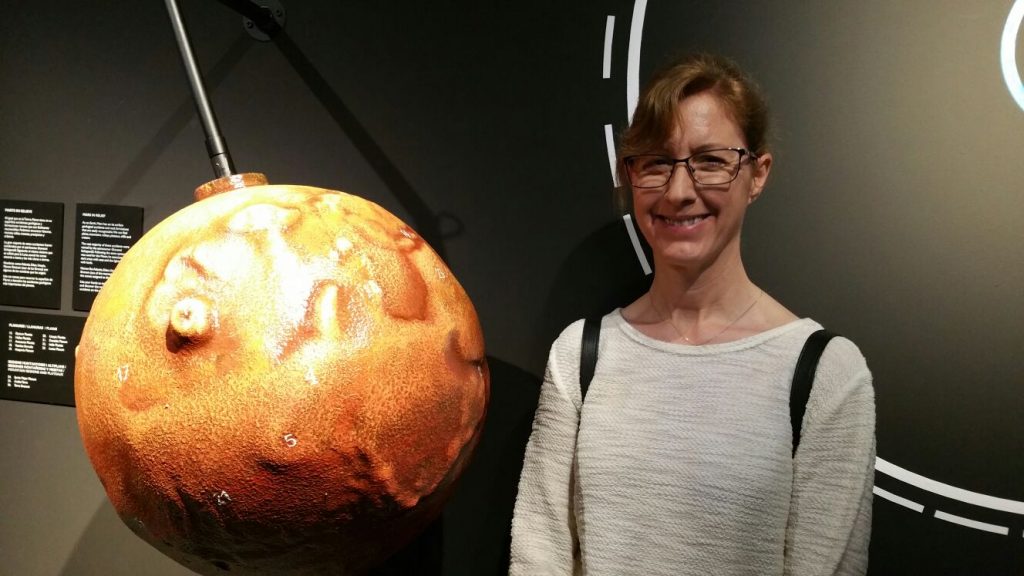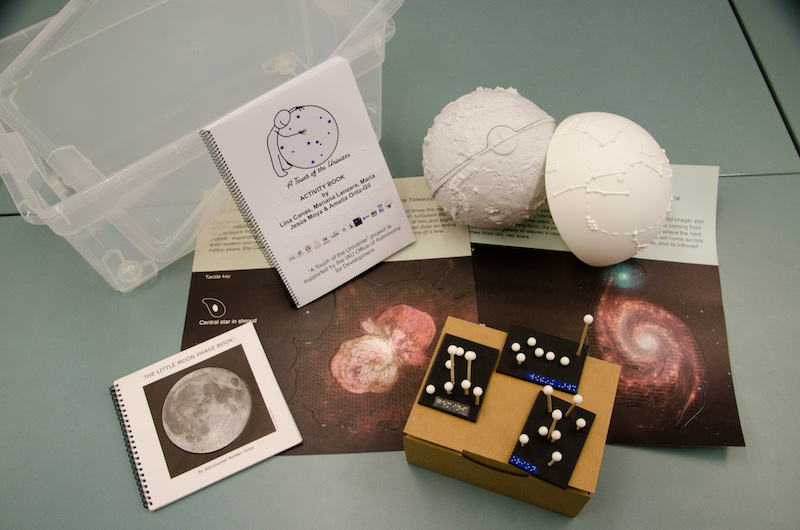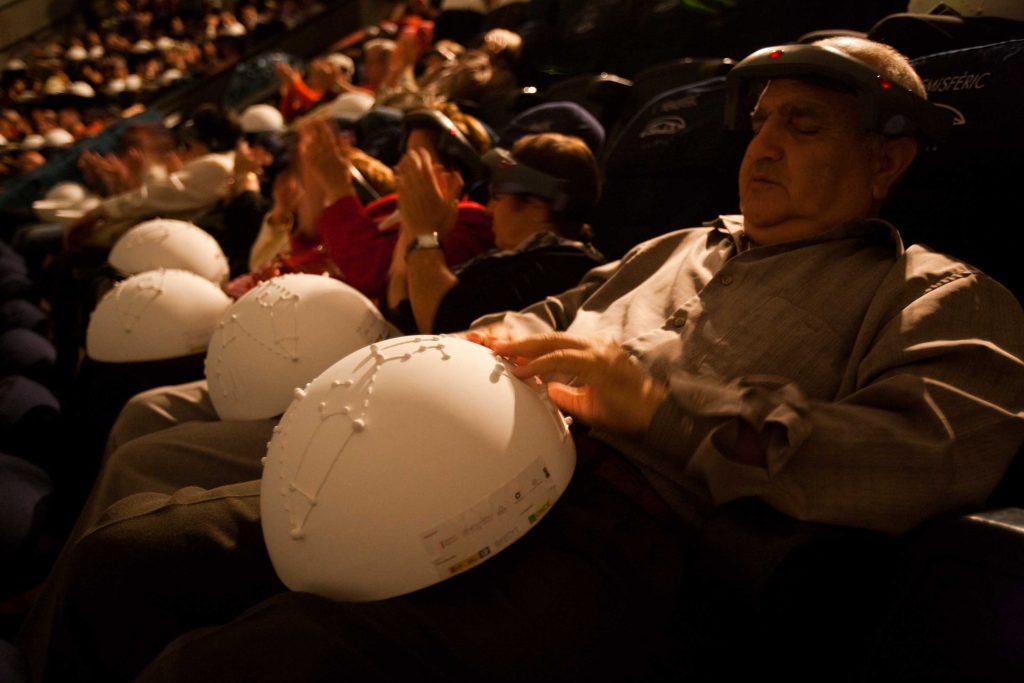Interview with Amelia Ortiz-Gil, Europlanet Prize Winner 2019
In this interview, we ask our Europlanet Prize Winner 2019, Amelia Ortiz-Gil, about the inspirations and motivations behind her work in outreach and her ambitions to make astronomy more accessible, both within the community and to wider society.

When did you first become interested in astronomy?
“I was a very young girl of about 4 or 5 when I read a book about the Solar System. I became fascinated to learn about worlds so different from our own. This fascination turned into curiosity and it led me to read everything I could related to astronomy as I was growing up, finally deciding to become an astronomer myself as I was also very interested in Physics.”
How did you first become involved in outreach?
“It was in 2003, when I moved to the University of Valencia (Spain) with a research fellowship to study clusters of galaxies. Towards the end of the fellowship the Astronomical Observatory of the University started this amazing project called ‘Aula del Cel’ (Sky Classroom) to conduct activities with school children daily at the Observatory. I became part of the team running the project and ended up working in outreach and education full time.”
What has inspired you in your work to make astronomy more accessible, particularly to those with visual impairments and disabilities?
“After a couple of years running the ‘Aula del Cel’ we received a request from a special education school to visit our Observatory. We had not conducted any activities taking into account any special needs of our public so this was the perfect chance to reach this part of the population. I think the sky is there for everybody to enjoy and it is our moral duty as outreach professionals to help everybody to reach the stars.
“We set up working very closely with the teachers of the special education school to adapt the activities that were usually conducted during the school visits. We learnt a lot from these teachers. The most important outcomes of the experience were two. First, that we were indeed able to adapt and develop astronomical activities for persons who are functionally diverse, and second, that it is an extremely gratifying experience because we had one of the most passionate and grateful publics ever.”

What are the initiatives that you have worked on that you are most proud of?
“I am very proud of the ‘A Touch of the Universe’ project (2013) which was the first to create a kit of astronomical resources accessible to the blind and visually impaired. We distributed 20 of these kits around the world and I know they have been very useful and have helped educators who wanted to reach this kind of public but needed this support and extra push. The resources are freely available to download from the project’s site so anyone anywhere in the world with access to a 3D printer can reproduce the tactile planetary globes.
“The project was based on two previous ones, the ‘Hands in the Sky’ planetarium show for the blind that we developed during the International Year of Astronomy (2009) and the Tactile 3D Moon, which was possible thanks to the generous funding of Europlanet’s Outreach Funding Scheme in 2011.”

Are there areas/things that the astronomical community should seek to address, or could do to make itself more inclusive and accessible?
“There are many areas and things that should change in order to make astronomy more inclusive and accessible at the outreach, academic and professional levels.
“There are a lot of barriers that need to be acknowledged and removed. Many are simply the result of some arbitrary choices that can be changed for the benefit of everyone, like the ways in which we chose to store, disseminate and present information. These choices will have a different impact on people with visual, hearing or learning impairments. Specifically, there is a clear need for scientific journals to follow a set of rules for them to be accessible to people with functional or neurological diversity.
Several actions are needed to ensure scientific meetings are inclusive and accessible to all.
And selection and hiring processes must ensure that they are not being discriminatory against anyone with an impairment.
There has been work done along theses lines already. For example, the Nashville Recommendations for Inclusive Astronomy is a living wiki document with many recommendations on how to make Astronomy more inclusive. And the Sloan Digital Sky Survey has created COINS (Committee On Inclusion iN SDSS), developing guidelines and recommendation documents for best practices, also regarding meeting and telecon accessibility.”
What are you working on at the moment?

“I am currently the chair of the International Astronomical Union’s Working Group of Astronomy for Equity and Inclusion, a group of astronomers and outreach professionals that seeks to inspire the community about inclusive practices. One of the WG projects I am involved with is the compilation of a Universal Dictionary of Astronomical Signs in as many different sign languages as possible in order to provide communicators and educators with a basic astronomical jargon when talking to deaf persons.
“I am also involved in the organisation of the IAU Symposium 358 ‘Astronomy for Equity, Diversity and Inclusion’ that will be held in Tokyo (Japan) on November 2019. One of the outcomes of this meeting will be the ‘Mitaka Resolutions’, a document to guide the IAU to achieve higher levels of Equity, Diversity and Inclusion in Astronomy.
“I am the IAU’s National Outreach Coordinator for Spain. This year the IAU is celebrating its 100th anniversary with a global celebration called IAU100 which is paying special attention to inclusive practices in astronomical outreach activities. I have also contributed to the traveling international exhibition “Inspiring Stars”, an IAU100 exhibition about inclusivity and accessibility in Astronomy, from school to professional environments. It features our tactile 3D planetary globes (Moon, Mars and Venus). Also the tactile 3D Moon is one of the prizes that can be won in different IAU100 competitions.
“The IAU’s OAD funded last year our project ‘A Touch of Venus’ to print 3D tactile models of the planet Venus. We have recently shipped them along with an activity book in Braille to developing countries.”
To find out more about Amelia’s work, read the press release on the Europlanet Prize 2019 and see https://astrokit.uv.es

